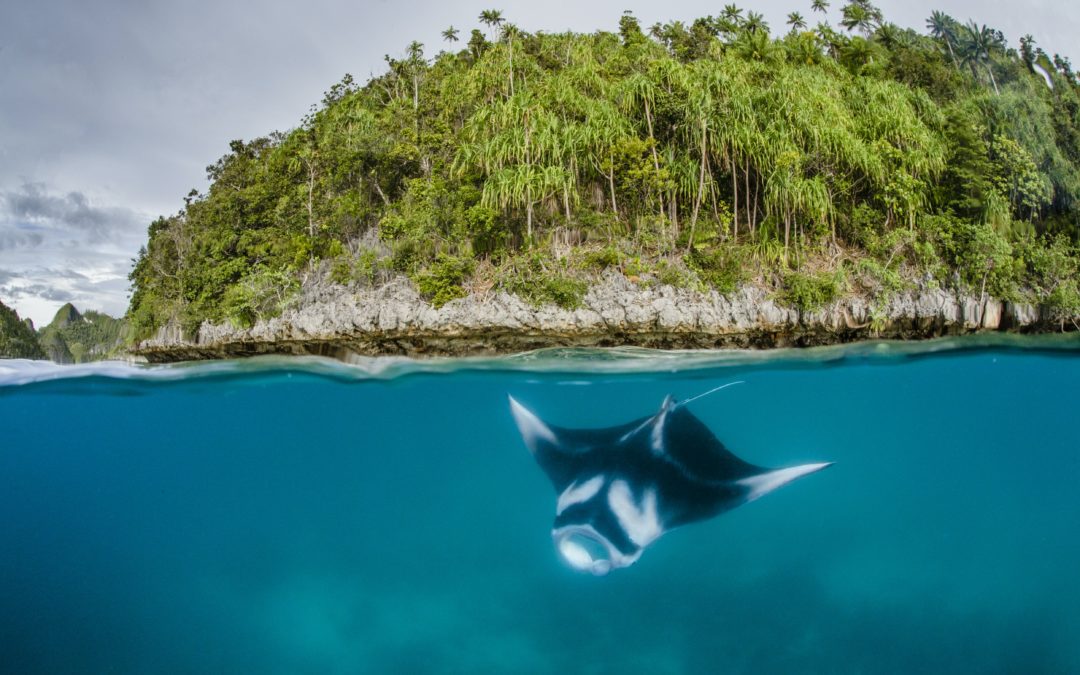Editor’s note: A growing body of evidence is showing that we are in the midst of a mass extinction event, the sixth such event in the history of Earth, and that humans are responsible. The indiscriminate killing of certain species is also driving many toward extinction — including mantas.
In this photo essay, photojournalist and conservationist Shawn Heinrichs, a previous contributor to Conservation News, takes us inside a grisly manta hunt in eastern Indonesia. Though Indonesia recently enacted widespread protections for manta populations, the regulations can be difficult to enforce.
Heinrichs’ work is featured in “Racing Extinction,” a new documentary that will air on the Discovery Channel on Dec. 2. The film, from director Louie Psihoyos, assembles a team of artists and activists on an undercover operation to expose the hidden world of endangered species and the race to protect them against mass extinction.
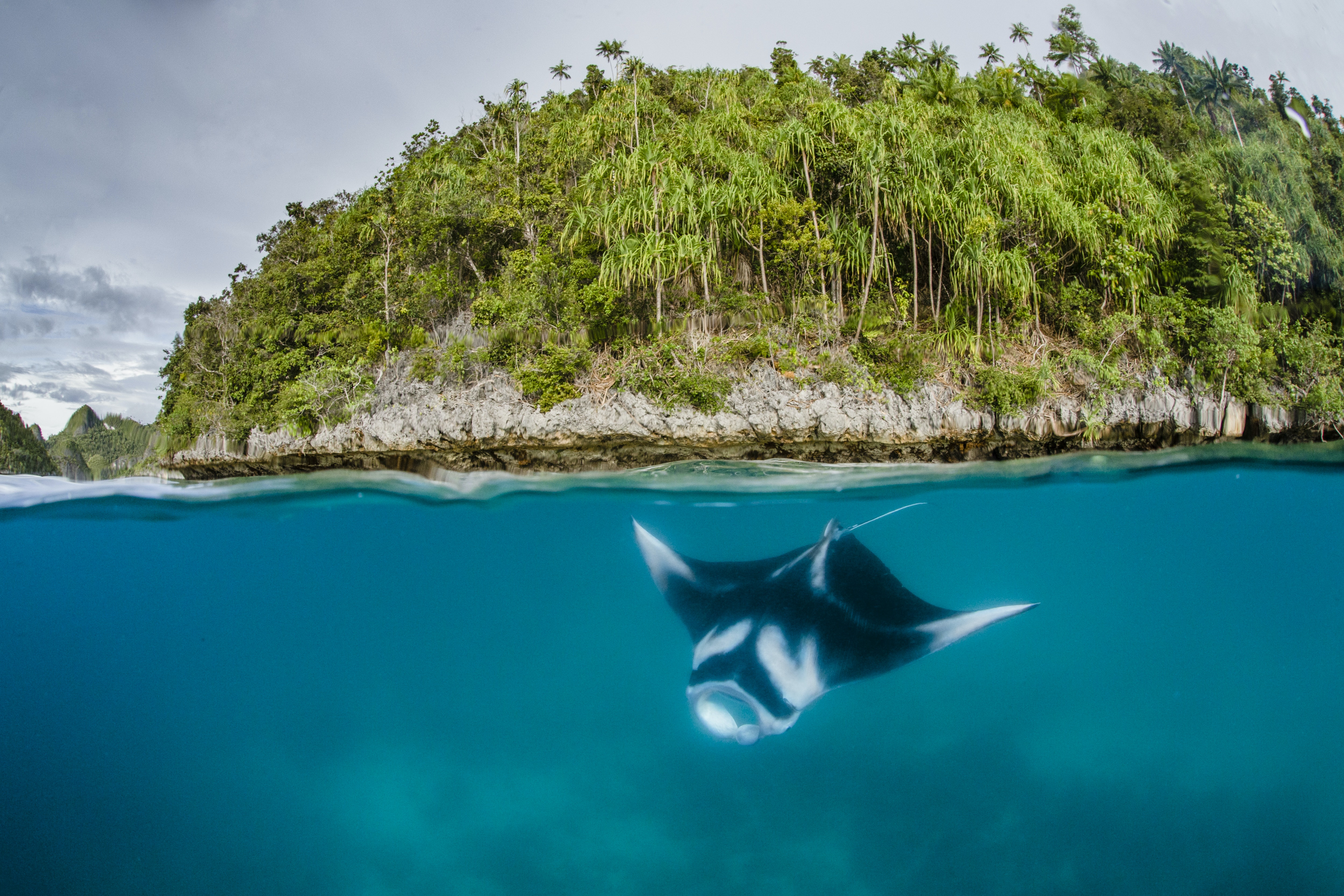 © Shawn Heinrichs
© Shawn Heinrichs
Indonesia — with its 17,000 islands, healthy reefs, strong currents and productive seas — offers the perfect habitat for manta rays to thrive. This baby reef manta in Wayag Lagoon, eastern Indonesia, could live up to 50 years. But when I visited Lamakera, a small village on the island of Solor around 800 miles [almost 1,300 kilometers] to the southwest of Raja Ampat, I uncovered different fates for these intelligent and gentle creatures.
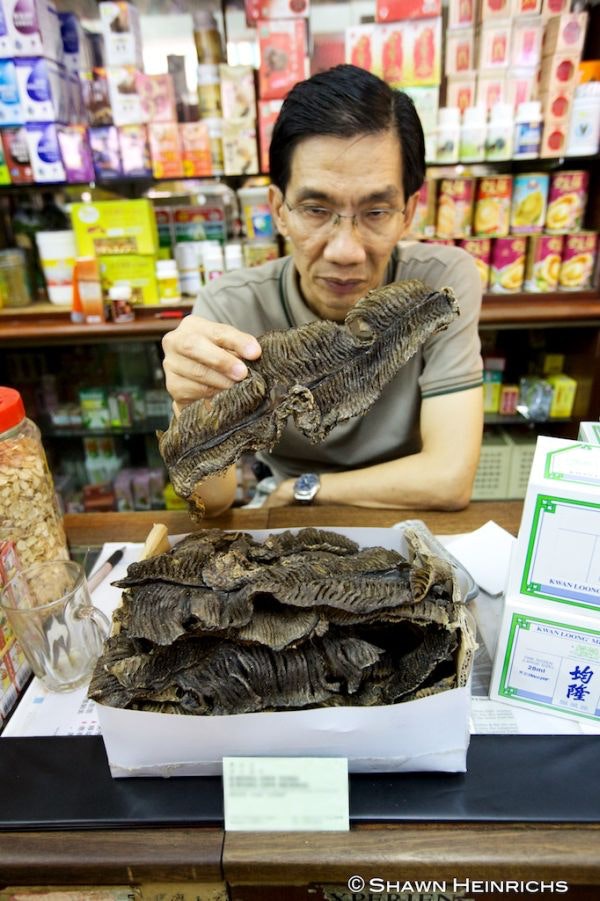
© Shawn Heinrichs
A trader weighs manta gills in Singapore. Villagers in Lamakera — one of the world’s largest manta fishing sites — have hunted traditionally for generations. With the rise of the gill-plate trade in the early 2000s, however, the community converted to diesel engines and transformed into a full-scale commercial fishery, landing more than 1,000 mantas in a single season and sending the local manta population into a downward spiral. Gill plates — specially adapted filaments that capture the manta’s main food source, plankton — are increasingly sought for their dubious medicinal properties.
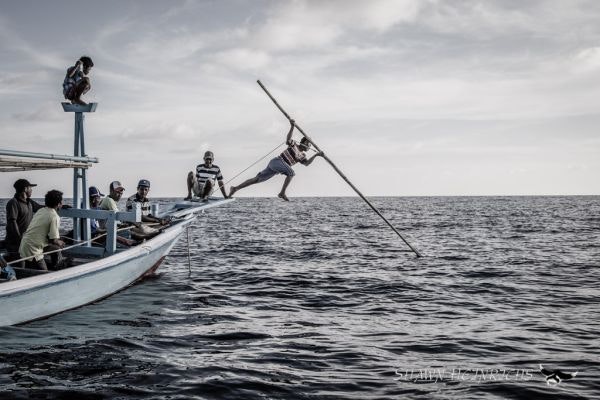
© Shawn Heinrichs
In 2011, fellow journalist Paul Hilton and I were documenting a fishing expedition in Lamakera in our quest to uncover and expose the biggest manta fisheries in the world. I cannot erase from my mind the images of a fisherman driving a barbed steel spearhead into the back of a fleeing giant manta ray, followed by an hour of struggle as the fatally wounded creature fought for its life.
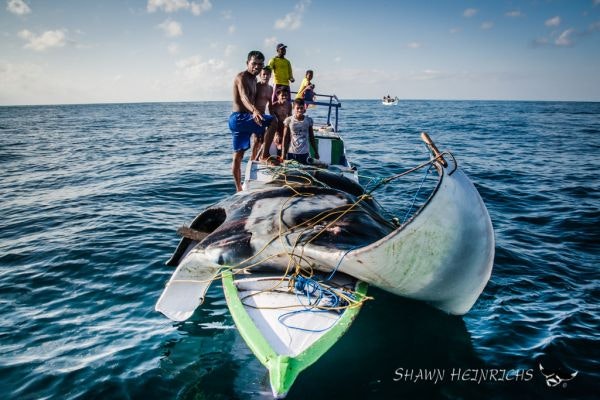
© Shawn Heinrichs
It took five strong men to pull the 15-foot [4.6-meter] manta on board the boat, where they sliced its wings off. As we motored back to the village, an armada of boats streamed past us and out to sea. Word had spread quickly that a group of mantas had arrived. As we neared the shoreline, the massive body parts of the manta were dumped into the shallows and dragged ashore. The gills were cut out first, carefully cleaned and placed in bags and buckets. Select portions of meat were cut into strips, tied into rings and hung on bamboo racks to dry in the sun. Paul and I stood on the beach in the heat of the afternoon sun, praying that the rest of the manta group had escaped this fate, but it was not to be. A boat pulled into the bay with the bodies of two giant mantas draped across it.
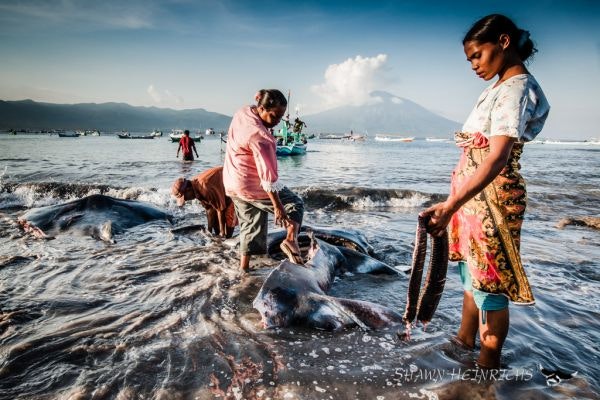
© Shawn Heinrichs
What was once a small-scale artisanal hunt had transformed into an all-out commercial fishery intent on capturing every last manta ray. And why? For their gills. For this remote community, there was no emotional connection to these gentle creatures and no value to them beyond their gills and meat. These were not bad people; they were just trying to feed their families. If this slaughter was to end, they needed an alternative livelihood.
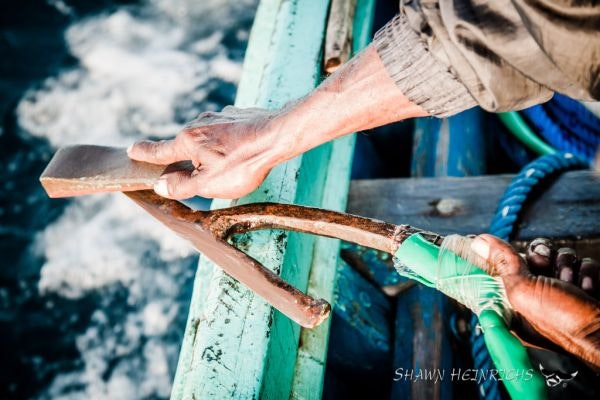
© Shawn Heinrichs
Months later, I shared images of the Lamakera manta hunt with Dr. Mark Erdmann, vice president of Conservation International’s Asia-Pacific Marine Program. Moved by what he saw, he helped me outline an ambitious strategy to create national protection for manta rays in Indonesia, the world’s biggest fisher of mantas. This was a lofty goal. To truly save mantas, we would need to harness the collective will of many nations, and the only internationally binding treaty for species conservation was the Convention on International Trade in Endangered Species (CITES). Together with conservationist Mary O’Malley and photojournalist Paul Hilton, we launched the Manta Ray of Hope Project, with a mission to highlight the global plight of manta and mobula rays and to identify conservation solutions to end the slaughter.
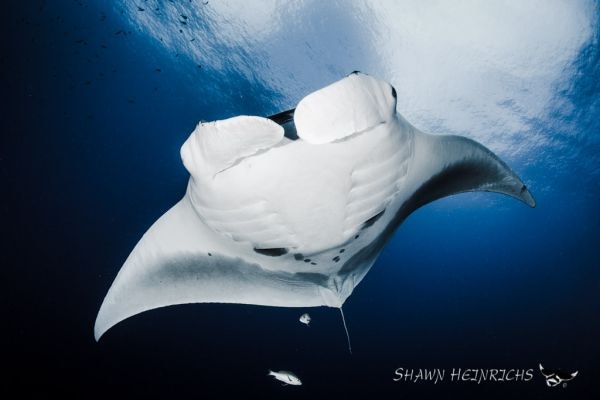
© Shawn Heinrichs
After a WildAid/Manta Trust multi-year campaign collaborating with NGOs and other stakeholders, our team scored a huge victory with the March 2013 listing of manta rays by CITES as an Appendix 2 species, meaning that trade in the species would be prohibited without proof that such trade would not harm manta populations. Erdmann and other key players, armed with our CITES materials and a new study authored by O’Malley on the tourism value of manta rays to Indonesia, approached the Indonesian government at the National Symposium on Shark Protection. Full protection for manta rays and CITES listed shark species was proposed, with the government responding favorably.
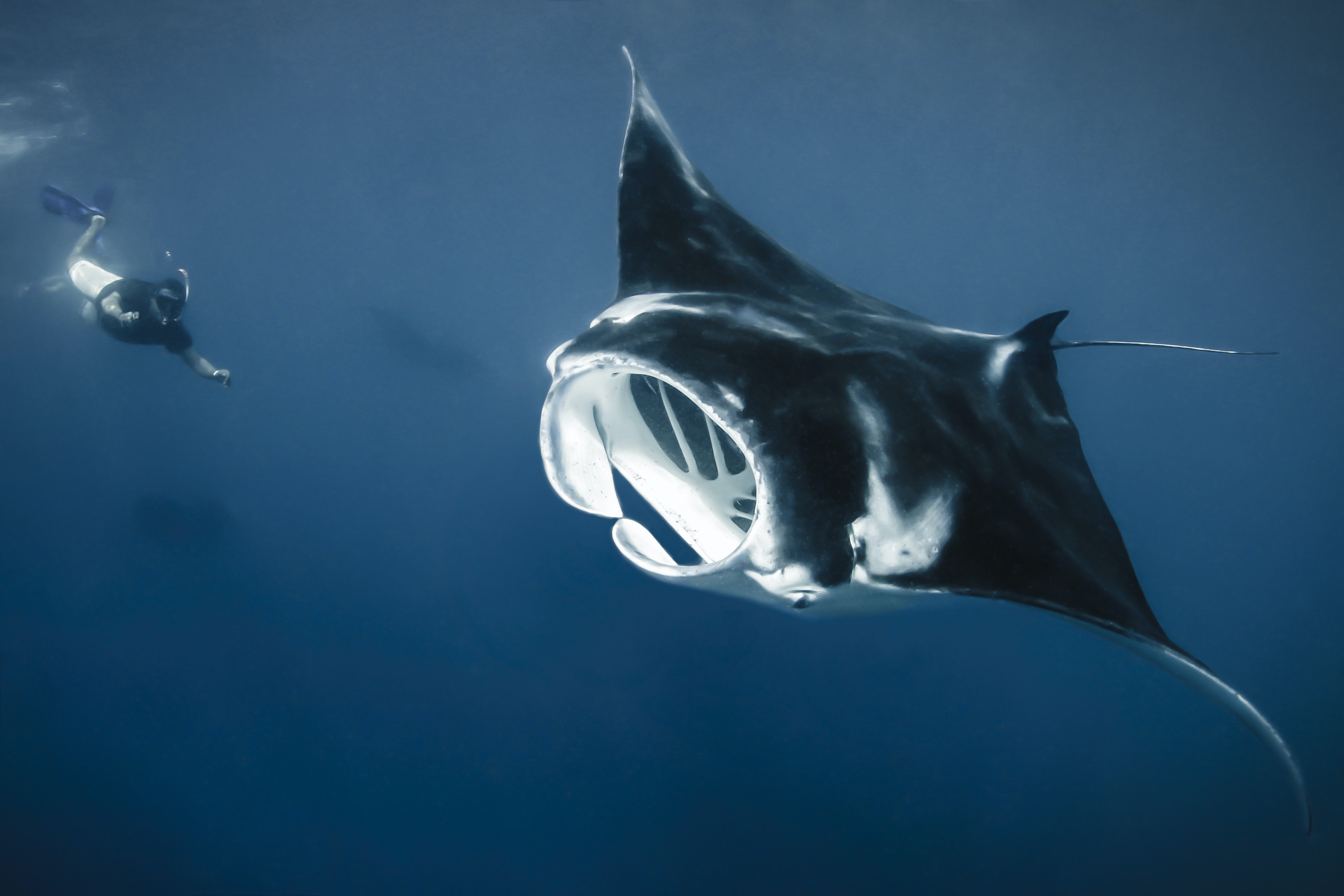
© Shawn Heinrichs
For the remainder of 2013, with support from MacArthur Foundation and in partnership with Conservation International and WildAid, we worked tirelessly to develop and implement a comprehensive national and international Indonesia manta and shark outreach campaign. Many parties played an important role in this process, and in January of 2014, we achieved an unprecedented victory, securing full national protection for manta rays and establishing Indonesia as the world’s largest manta sanctuary. With this landmark legislation in place, we immediately turned our attention back to Lamakera and began planning a massive community transition program to end the slaughter of manta rays.
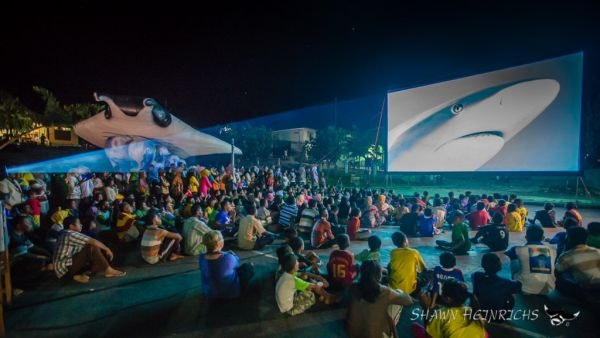
© Shawn Heinrichs
My friend John Weller and I had developed “Ocean Theater,” a traveling outdoor cinema that projected captivating imagery at a brilliant 10,000 lumens onto a massive screen standing two stories tall and 27 feet [8.2 meters] across. In April 2014, we shipped it to Indonesia to show communities the beauty and grace of mantas. With support from the Oceanic Preservation Society, WildAid and private donors, we brought it to Lamakera. Undeterred by scorching sun followed by downpours, together with the community we erected the massive screen and our giant 21-foot [6.4-meter] inflatable manta ray.
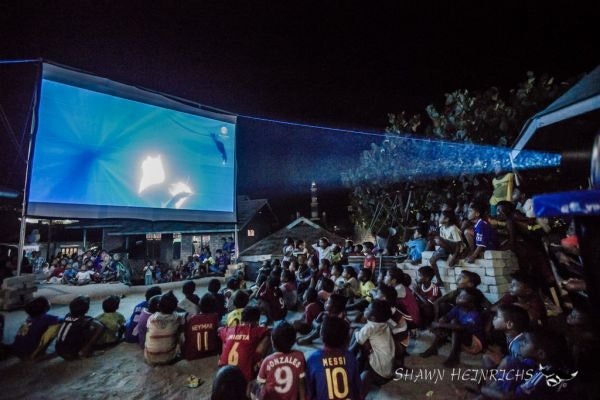
© Shawn Heinrichs
Lamakerans gathered by the hundreds in the schoolyard. In a village where only a handful of televisions exist, all eyes were transfixed on this massive screen. When the first images of a giant manta lit up the screen, a hush fell over the stunned crowd, followed immediately by the cheers of exuberant children as they watched video shorts featuring marine footage and conservation stories about manta rays and the ocean. Even the most hardened of the manta hunters were transfixed by beauty of a world they had only witnessed from the other end of a harpoon shaft.
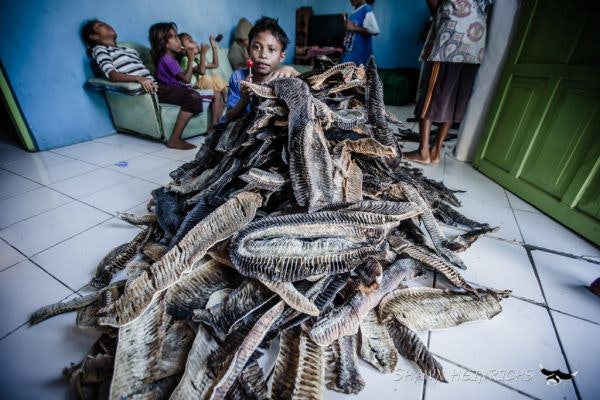
© Shawn Heinrichs
I noticed a row of small children, their wide eyes soaking up the images on the screen. For these children, a seed was planted and a brilliant transformation was already taking place. Suddenly their futures presented exciting new opportunities — not as hunters, but as guides, researchers and maybe even photographers. For the first time since witnessing the mass killing of mantas on the beach of Lamakera, I felt hope return and I saw a path to end the slaughter and transform the livelihoods of this remote community.
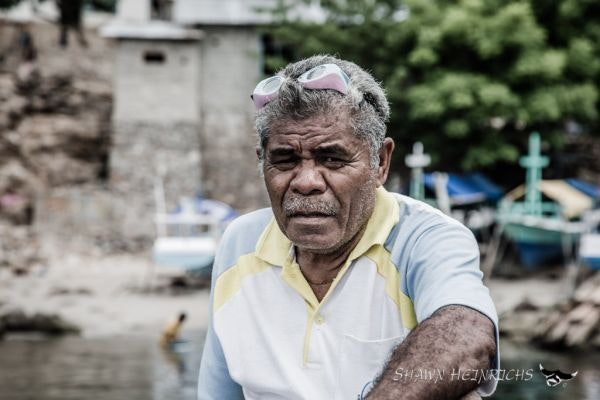
© Shawn Heinrichs
Building on this spirited community outreach, we are now working to instill lasting change in Lamakera, educating the community about the state of the oceans (and the inevitable fate of their industry and villages if they don’t act sustainably). Each community leader — including village heads, clan heads and spiritual and traditional leaders — has signed an agreement committing to transition from manta hunting to sustainable livelihoods centered on research, sustainable fishing and tourism. Pak Kasim (pictured), one of the elder manta hunters, has since joined our research team and is a strong advocate for manta conservation.

© Shawn Heinrichs
A community transition to new industries can be extremely challenging, though, especially in a place like Lamakera, where the manta hunt is not just a source of income for locals but also a source of pride. As such, we are engaging respectfully and carefully to ensure that our presence is invited and respected throughout the communities. Our activities in the villages are designed to engage interested or concerned villagers in a public forum. The decision to stop fishing may come from the village elders, but the vast majority of people must support the transition for it to be effective.
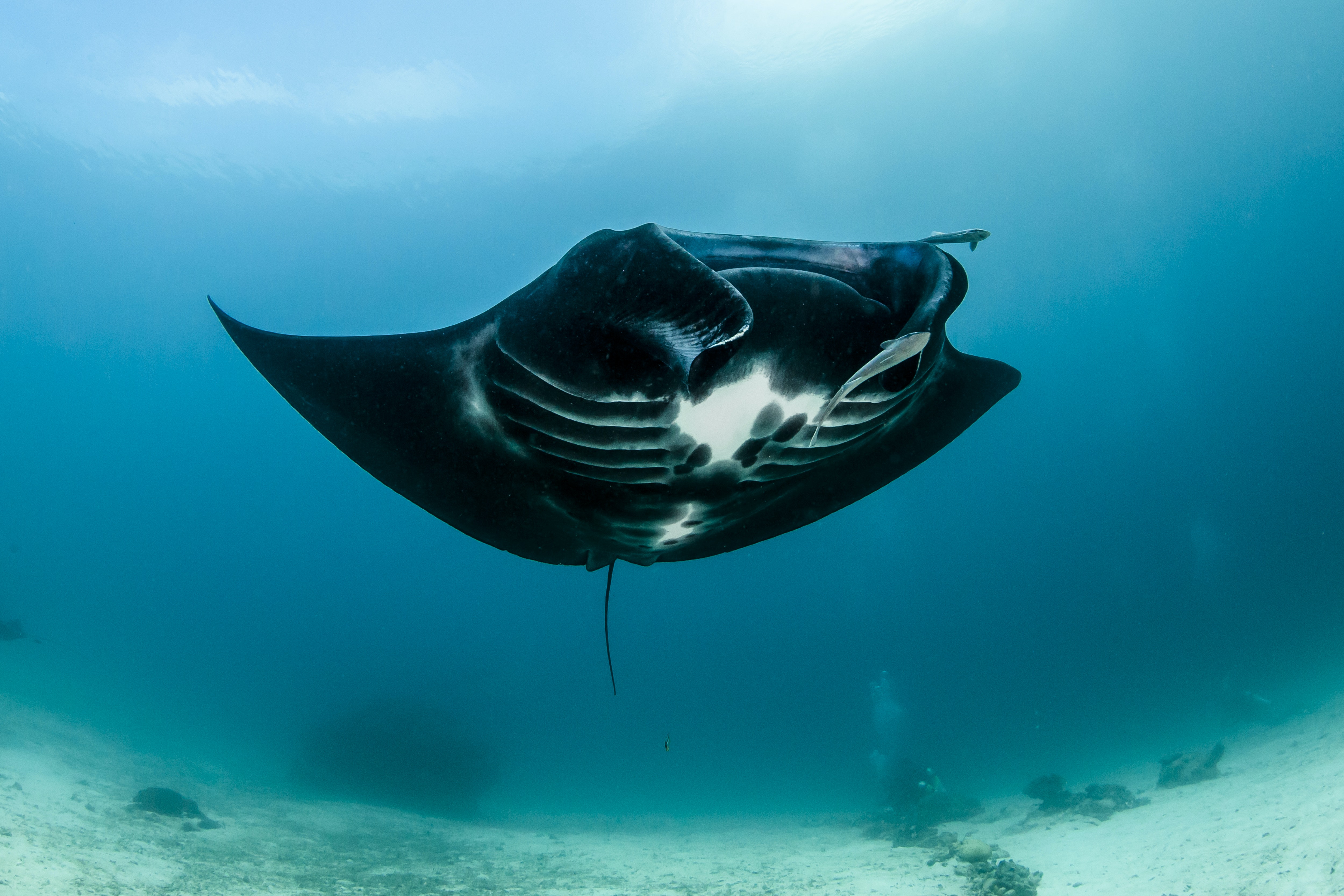
© Shawn Heinrichs
A successful initiative that ends the manta hunts will not only play a pivotal role in helping Lamakera find a sustainable path forward — it will also create an inspiring example to the rest of Indonesia, and the world, that we can effectively conserve vulnerable marine life, even in some of the most challenging sites on Earth.
Click here to find out more about efforts to save this and other species, and tune in to the Discovery Channel on Wed., Dec. 2 at 9 p.m. ET to watch “Racing Extinction.”
Shawn Heinrichs is an Emmy Award-winning cinematographer, photographer and marine conservationist. An independent filmmaker, he is the founder of Blue Sphere Media, a production company specializing in underwater, adventure and conservation media.
Want to read more stories like this? Sign up for email updates. Donate to Conservation International.
Further reading
If you’d like to read the original source of this article please click here Visit Source

